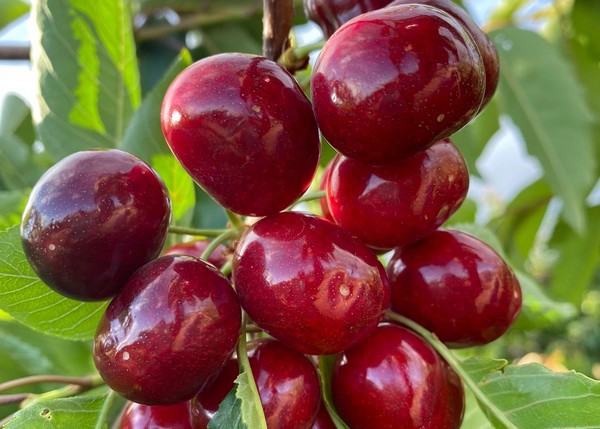The cherry season is starting with the first extra-early fruits, whose quality, in many cases, is not the one expected by an increasingly volatile market in terms of consumption and prices, and that invites reflection on the suitability of many of the varieties that are currently being grown. Luis Elías, of Viveros Mariano Soria, says that "in the extra-early and early segment, most of the traditional varieties are being replaced very quickly". And the difference in terms of quality with the newer developments is "more than evident."

"The early varieties cultivated until now tend to be softer and less productive, losing competitive advantage". Also, we must remember that it is increasingly appreciated to be able to ship the products as far as possible, That is why, according to Luis, it is so important to take into account the capacity of the fruit to withstand all the processes that such a delicate product goes through, from manual harvesting or selection, to hydrocooling and transport, before reaching consumers. "You could say that, in Europe, we are in the middle of a very important leap in the quality change of cherries."

In this regard, Viveros Mariano Soria has shown to be committed to the Royal line of varieties, which stands out "for the quality of the fruit." "The Royal Bailey, for example, is a variety that, while not self-fertile, delivers large productions, and the fruit reaches large sizes of more than 30-32 mm without the need for major technical handling."

"For its part, the Roya Hermion is a bit of an earlier variety, yielding fruit about 7-8 days earlier than the Royal Bailey. It has a very dark color and hardness above 80-85 durofel. In the early cherry segment which includes the more traditional Burlat, Early Biggy or Early Lory varieties, the Royal varieties represent a very big change in terms of fruit quality."

Luis Elías recalls that in the cherry sector it is very important to assess the characteristics of the production area and the time period in which it is possible to work, since the cherry season is very limited in terms of time, and choosing the right variety is a key factor to ensure the profitability of the farm.
"As for the Royal Bailey and Royal Hermion, they are varieties that I would recommend for early areas with a medium/high amount of hours of cold (over 700). In any case, even when planting them in higher areas or starting later, their quality makes it possible to compete with the varieties that are already on the market. At the time when there are larger volumes available, their price can be kept high thanks to their great quality."

Outside the early segment, Viveros Mariano Soria also works with the Royal Helen variety. "This is a later cherry whose harvest would start at a date very close to that of the Lapins variety. The Royal Helen has the same pollen allele as the Lapins, which means that 
it is very productive, just like all the varieties that share it; however, the Royal Helen reaches up to 23-24 degrees Brix, as well as larger calibers," and both of these characteristics can make a difference during the time when the larger volumes of mid-season cherries arrive, which is a difficult period. "In fact, the Royal Helen is a variety that is being implemented very successfully in high farms for that period, because it is very competitive thanks to its high taste quality."
"We are at a time when very interesting alternatives are emerging."
Earliness is, however, a highly appreciated quality by producers, since cherries are a fruit with minimal off-season supply competition, and whose consumption is not influenced by external factors like temperatures, and this entails higher profitability. For this reason, in areas such as Aragon, there are already greenhouse productions achieving a notable market position when looking at the Spanish season as a whole.

"The Royal Bailey and Royal Hermion would also be suitable for greenhouse cultivation, although, given that they are not self-fertile, they require more specific management. For areas with fewer hours of cold, such as Alicante, where traditional varieties have already failed for several seasons, the Royal line has the Royal Tioga, which can do very well with only 250 hours of cold, or the Royal Hazel, which, although not self-fertile, can deliver a large caliber cherry with a small amount of cold."
"Regarding self-fertility in cherry trees, we are soon traveling to the COT International facilities in Nimes to test the new variety Sunpop, which features the absolute self-fertility allele, and which is delivering very significant productions and very high Brix levels," says Luis Elías. "We are at a time when very interesting alternatives are emerging that could give us a true competitive push."

 For more information:
For more information:
Viveros Mariano Soria
Tel.: +34 976 60 01 67
info@viverosmarianosoria.com
www.viverosmarianosoria.com
